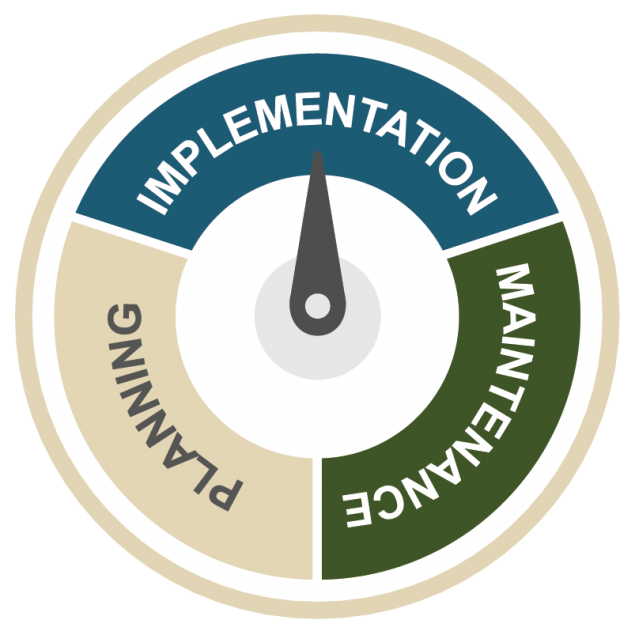Overview of WISEWOMAN Innovation Recipients
Using Innovation Funding to Reach Women in Under-Resourced Communities

Seven out of 30 WISEWOMAN recipients received additional Innovation funding for the 5-year cooperative agreement. The available reports included on this site are from September 2018 to May 2021 (the first 2.5 years of the program). All Innovation recipients share the goal of improving outreach to women who are at an increased risk of cardiovascular disease (CVD).
About the WISEWOMAN Innovation Recipients
Learn more about each WISEWOMAN Innovation recipient and how they are implementing their program. Click on each recipient to read their Innovation Spotlight:
Across all seven recipients:
- 9,237 women received a heart disease and stroke risk factor screening (about 2 in 5 of the 21,305 women served by the WISEWOMAN program in total)
- 82% of women screened by the Innovation recipients identify as Hispanic, Black or African American, Asian or Pacific Islander, American Indian or Alaska Native, or multiracial
- 49% speak a language other than English as their primary language
*These statistics use data from the first 2.5 years of the cooperative agreement (September 2018 to May 2021), including (1) data reported by the seven Innovation recipients and their partners during virtual site visit interviews from March through May 2021; (2) minimum data elements submitted by recipients to CDC in December 2020, including demographic and health data for women screened in Years 1 and 2; and (3) program documents submitted to CDC by recipients through May 2021, including annual progress reports, implementation briefs, and evaluation reports. For more information, please contact DHDSPEvaluation@cdc.gov.
Working With Local Organizations
Colorado and Pennsylvania Innovation recipients are partnering with local organizations that employ community health workers (CHWs) who have connections with women in under resourced communities. Recipients leverage CHWs’ relationships within these communities to provide cardiovascular health education and CVD screenings.
Working With Federally Qualified Health Centers
Michigan, Minnesota, and Southcentral Foundation Innovation recipients are partnering with Federally Qualified Health Centers (FQHCs) that serve people from low-income populations who are at an increased risk for CVD. Recipients work with practitioners and staff at FQHCs to provide cardiovascular health education and healthy behavior support services (HBSS) to women who come to the clinic seeking other health services.
Working With People Who Have Been Economically or Socially Marginalized
Connecticut and North Carolina Innovation recipients are training other service providers (e.g., domestic violence shelter staff, CHWs) who work with people who have been economically or socially marginalized. The trainings include background information on the WISEWOMAN program, guidance for identifying women who would benefit from the program, and workflows to refer these women for CVD screenings and HBSS.
Quick Overview of Facilitators and Barriers in Years 1 and 2
Partnerships
All WISEWOMAN Innovation recipients identified partner organizations that had strong connections to the community and other implementing partners. Although four recipients leveraged partner staff, funding, and infrastructure, the pandemic prevented other recipients from doing the same.
Staffing
A key theme among three of the recipients that successfully launched their innovative work was having dedicated staff to oversee the work. Other recipients described staffing challenges such as turnover and competing priorities that inhibited their progress.
Communication
Lack of strong protocols and clear communication were among the initial challenges. Despite initial difficulties establishing program workflows, most recipients reported overcoming these challenges through regular communication with staff and partners.
COVID-19 Pandemic
Recipients that partnered with clinics and other emergency service providers faced unique challenges because of COVID-19, and the ability to pivot quickly was key to their success. Hesitancy among women to attend screenings and in-person HBSS during the pandemic deterred progress among recipients.
